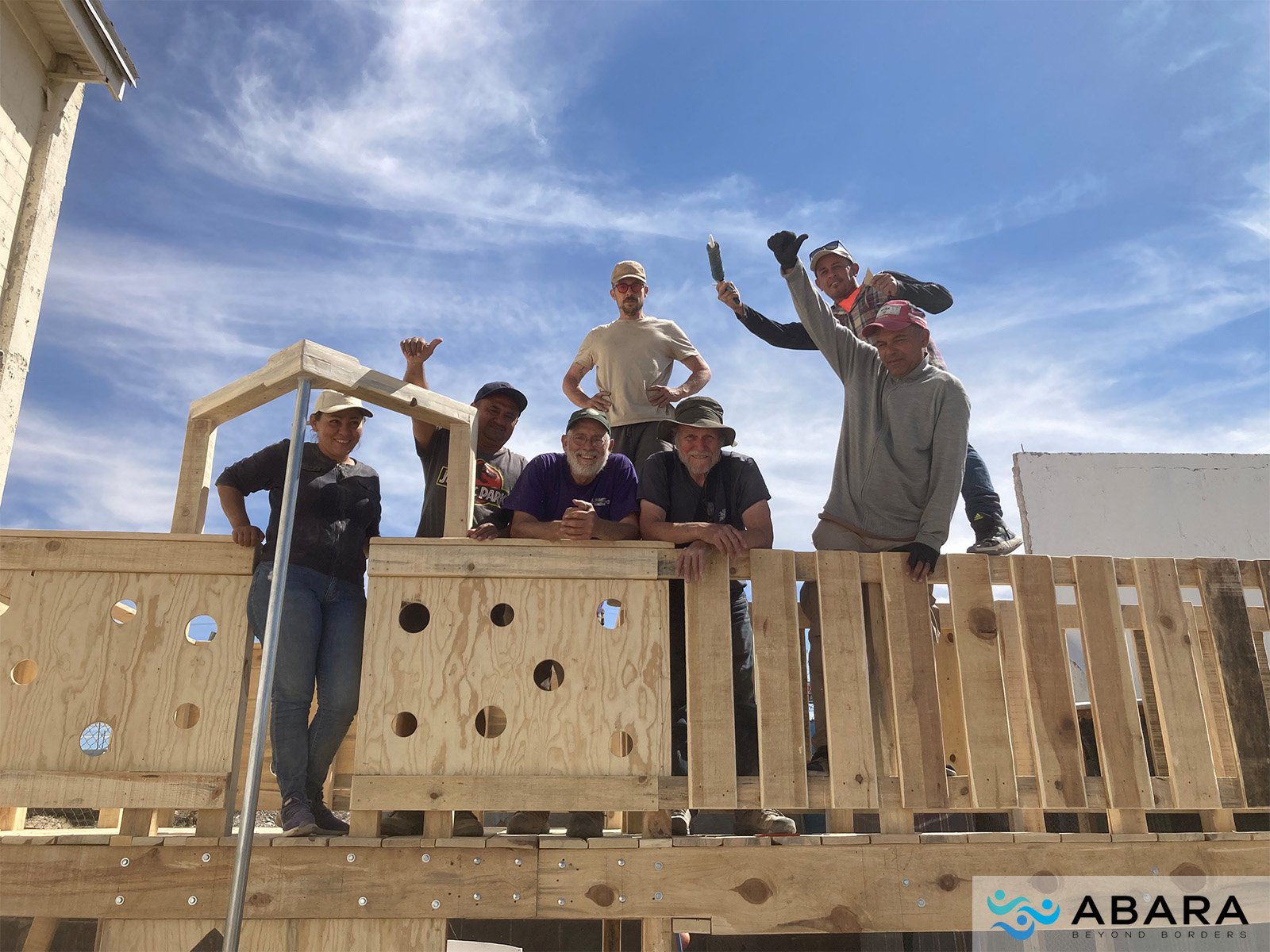Kiki Romero Shelter Playground
A climbing and shade structure for children within a city-run family shelter in Ciudad Juarez, Mexico
This play space was a separate initiative undertaken by Mitch Ryerson, an active GDIRC member. The project was based on experience gained through various GDIRC projects and was built with fellow American carpenters Henry Stone and Nico Stone.
The Kiki Romero Shelter is in a former gym in Ciudad Juarez, Mexico. This city run facility holds 200 people, the majority of whom are women and children seeking asylum in the United States. In spring 2024 Mitch Ryerson, Henry Stone and Nico Stone, working along with shelter residents and supported by the local NGO partner ABARA, built a new wooden play structure for the facility. The carpentry was all completed in one week, with painting, shade structure and monkey bars completed shortly thereafter.
Timeline: January - May 2024
Location: Ciudad Juarez, Mexico
Partner: ABARA
Size: 112 m² / 1,200 sf
Cost: $14,000
Team Member: Mitch Ryerson
Partners: Henry Stone, Nico Stone
Site
Ciudad Juarez is a city of 2.5 million people across the border from El Paso, Texas. In 2021, the city transformed a local gym into a shelter for migrants waiting to enter the United States. It typically houses around 200 people, but at times has up to 400 people in very crowded conditions.
Shelters along the border often fluctuate in size due to many factors. Political situations, immigration policies and border enforcement all play a role in determining how many migrants are at Kiki Romero at any given time. Most of the migrants are from Central and South America, along with especially many from Venezuela.
Design Process
The design for this play structure was developed with input from the shelter staff and the NGO partner in Juarez, ABARA. Using Google Earth images and site plans provided by the city, the team was able to make the most of the space provided. A two-level climber, with a bridge, slide, fire pole and rock wall was situated adjacent to a secure entrance to the shelter dormitory. Typical of urban, outdoor spaces in hot climates, providing shade to the area was essential.
Construction
The team arrived in Juarez with a shovel ready plan and a stock list. Site preparation began immediately, and a local sawmill delivered the wood on the second day. By the third day a core crew of migrant volunteers had developed, eager to help and to learn basic carpentry skills.






Reflection
Although the timeline for the construction of the play structure was tight, the collective team was able to complete all the carpentry in one week. After the US team returned home, the local team did a wonderful job painting the structure with cheerful colors. Also, the shelter staff and our partners from ABARA, Rosa and Clara, were able to oversee the successful installation of the shade structure, monkey bars and a six-inch-deep layer of clean sand over the entire play area.
It has been very rewarding to see the excitement among the residents the shelter brought, as well as among the local migrant support network. The volunteers from the shelter who participated also gained valuable carpentry experience that they felt would help them find work in their new homes. Person to person support endeavors such as this one provide an opportunity to learn from and to appreciate the humanity of the people in these shelters who are seeking a better life for their families.
From left to right at the ribbon cutting:
Daniel Banda, Sami DiPasquale, Rosa Mani and CJ Jacquez (all from ABARA), then the mayor, Martin Chaparro, then Santiago Gonzalez Reyes (Human Rights Commissioner) and then Ericka Palma (Kiki Romero staff member).







